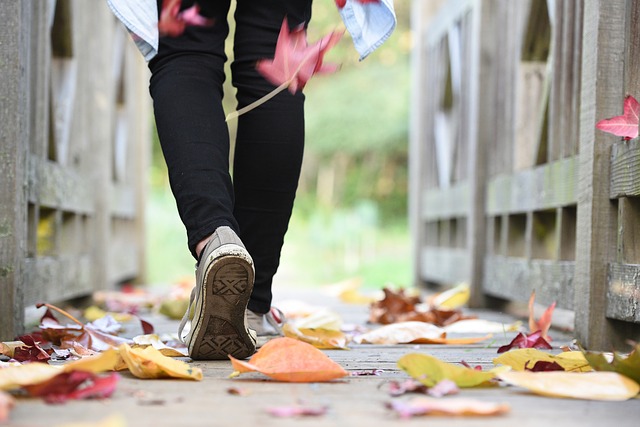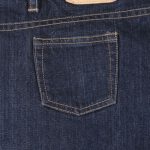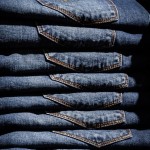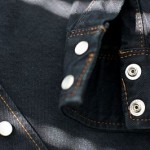If you own a pair of vintage jeans, you’ll need to maintain them. Jeans can last for well over a decade when properly maintained. With their denim construction, they aren’t susceptible to premature wear and tear. Well-maintained jeans can offer many years of use.
Vintage jeans, however, may require a little extra TLC than new jeans. Vintage jeans are characterized by their old age. They are older than new jeans, so they’ve already been exposed to regular use. You can still make them last, but there are several things you should and shouldn’t do when caring for vintage jeans.
Do Regularly Inspect for Fraying
You should regularly inspect your vintage jeans for fraying. Fraying involves the denim material unraveling or otherwise coming apart. With the exception of distressed jeans, most jeans shouldn’t fray. Nonetheless, wearing the same pair of jeans day after day may result in them fraying.
Fraying typically occurs at the bottom of the pant legs or around the knees. If you allow your vintage jeans to drag on the ground, for instance, they may fray at the bottom. Once they begin fraying, they’ll quickly degrade. Therefore, it’s a good idea to regularly inspect your vintage jeans for fraying.
Do Wash in Cold Water
When it’s time to wash your vintage jeans, choose the cold water setting on your washing machine. Cold water is gentler than hot water. The temperature of hot water inside of a washing machine can reach up to 130 degrees Fahrenheit. All of that heat can stress your vintage jeans while potentially weakening them.
By choosing the cold water setting, you can protect your vintage jeans from unnecessary stress. Your vintage jeans will last longer if you wash them in cold water. And contrary to popular belief, hot water isn’t more effective at removing stains. In some cases, hot water can have the opposite by encouraging stains to “set.”
Do Air Dry
Another tip to make your vintage jeans last a lifetime is to air dry them. Also known as line drying, air drying involves hanging jeans — or any garment for that matter — on a line to dry. There’s air drying, and there’s machine drying. Machine drying is faster, but it’s also more aggressive than air drying. If you machine dry your vintage jeans too many times, they may degrade.
Air drying will protect your vintage jeans from damage. After washing your vintage jeans, hang them on a line to dry. You can air dry them either indoors or outdoors. Some people air dry their jeans in the bathroom. Assuming there’s a shower rod in your bathroom, you can hang your vintage jeans on it. Alternatively, you can air dry your vintage jeans by hanging them on a line outdoors. Whether indoors or outdoors, air drying is a safer way to dry your vintage jeans.

Don’t Overstretch
You should avoid overstretching your vintage jeans. If you overstretch your vintage jeans, you may damage them. Overstretching can occur when putting on or taking off your vintage jeans. To prevent this from happening, take your time and use less force. If you’re struggling to put on or take off your vintage jeans, you may need to pull the fly all the way down beforehand.
Of course, overstretching is only a concern if your vintage jeans are made of regular denim. While some jeans are made of regular denim, others are made of stretch denim. Stretch denim contains an elastic material, such as lycra, that makes jeans more elastic. If your vintage jeans are made of stretch denim, they shouldn’t succumb to overstretching.
Don’t Wash Every Day
There’s no reason you should wash your vintage jeans every day. Washing them every day, in fact, will typically shorten their lifespan.
How often should you wash your vintage jeans exactly? You should be able to wear them at least two or three times before they need to be washed. By washing your vintage jeans less frequently, you’ll get more use out of them. They’ll last longer while offering a higher level of protection against premature wear and tear.
Don’t Wash With Other Colors
In addition to washing them less frequently, you should avoid washing your vintage jeans with other colors. If they are black, you should only wash them with black garments. If your vintage jeans are indigo, you should only wash them with indigo garments.
Washing your vintage jeans with other colors may result in bleeding colors. Bleeding colors is a phenomenon in which the dye from one garment leaks out and onto another garment. It can cause discoloration. If you wash black jeans with a red shirt, for instance, the jeans may come out with red spots. Or the shirt may come out with black spots. Separating laundry loads by color will prevent this from happening. You can still wash your vintage jeans, but you should avoid washing them with other colors.
Don’t Store in the Attic or Basement
It may sound harmless, but you shouldn’t store your vintage jeans in the attic or basement. There are probably some times of the year when you may rarely or never wear your vintage jeans. During the summer, for instance, you may want to store them. Nonetheless, you shouldn’t store your vintage jeans in the attic or basement.
Attics and basements are typically humid. They contain higher concentrations of airborne moisture than other indoor spaces. If you store your vintage jeans in one of these humid spaces, they may develop mildew. Mildew thrives in humid environments. Attics and basements are both humid. Therefore, your vintage jeans may develop mildew if you store them here.
Rather than storing them in the attic or basement, choose a climate-controleld indoor space in which to store your vintage jeans. You can store them in your bedroom closet, for instance. Bedrooms are typically climate-controlled, so you don’t have to worry about high humidity damaging them.











